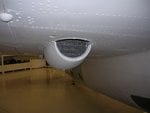Oh, I agree completely with Merlin's on a Whirlwind, I think they were too much engine on too small an airframe. I also like the Whirlwind.
I have a book at home that has British tests of some British, US and German fighters, Flying to the Limit. In their test the early Cyclone powered Martlet I only got up to 293 mph at 13,700 feet, the Martlet II did 298 at 21,000 feet, the Hawk 75 with a Cyclone did 302 at 14,000.
I have a book at home that has British tests of some British, US and German fighters, Flying to the Limit. In their test the early Cyclone powered Martlet I only got up to 293 mph at 13,700 feet, the Martlet II did 298 at 21,000 feet, the Hawk 75 with a Cyclone did 302 at 14,000.
Last edited:

